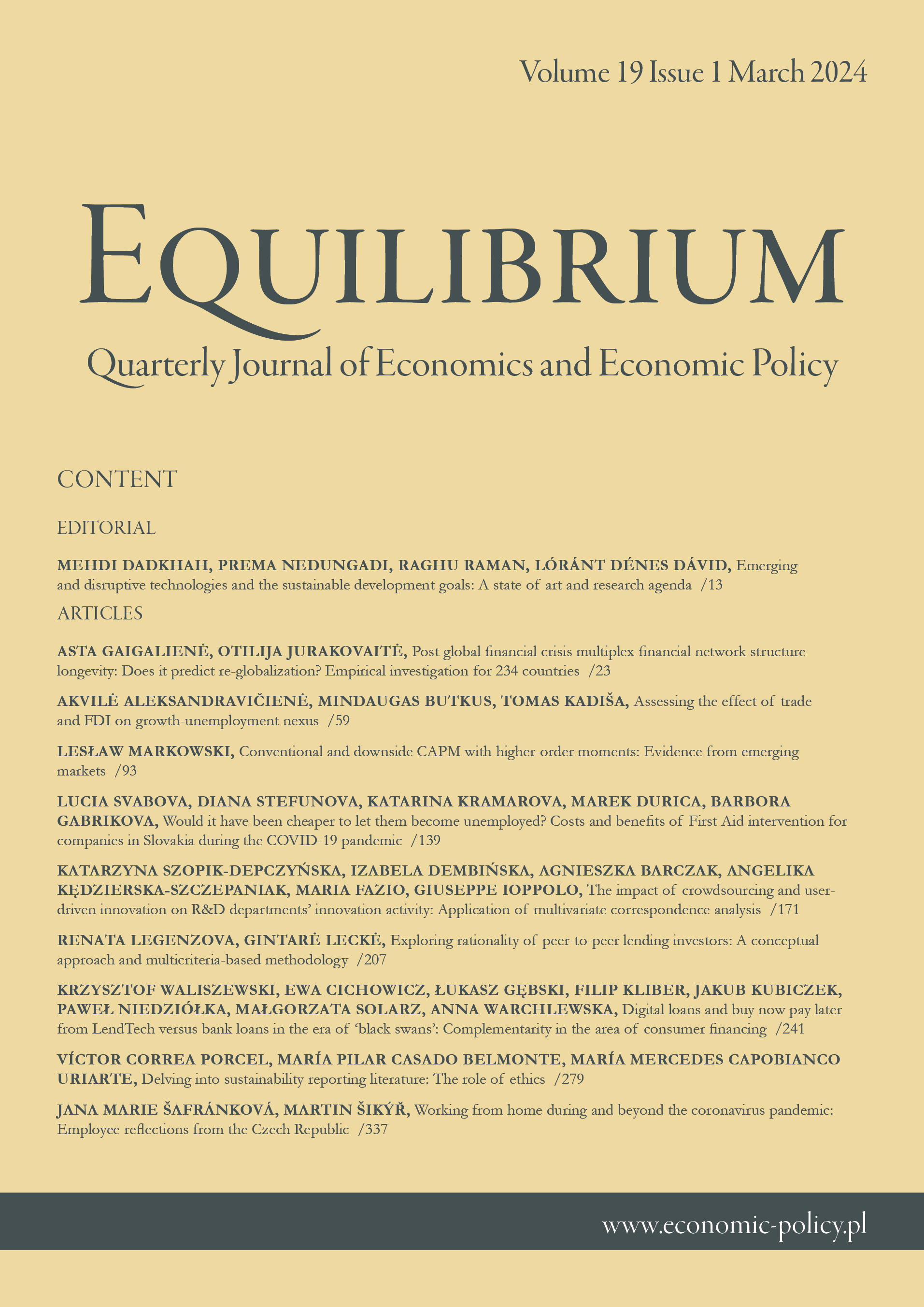Intention to move and residential satisfaction: evidence from Poland
IF 6.2
Q1 ECONOMICS
Equilibrium-Quarterly Journal of Economics and Economic Policy
Pub Date : 2020-06-24
DOI:10.24136/eq.2020.016
引用次数: 11
Abstract
Research background: Residential mobility affects the spatial structure of cities and urban development. Longer-distance migration has many additional implications: it affects the demographic situation of a sending area as well as its growth prospects. The literature on interregional and especially international migration regards residential satisfaction as being of at least secondary importance. More attention to this concept is given in research on intra-urban migration and suburbanisation. In a seminal paper of Speare (1974), residential satisfaction was found to be the best predictor of the willingness to move. However, determinants of mobility are country-specific. Purpose of the article: Answering the following research questions: 1) What is the scale and selectivity of the intention to move among city residents? 2) Does residential satisfaction explain variation in migration intentions? Methods: The data are derived from the PAPI survey on life quality in Lublin, Poland (sample: 1101 residents). We build ordered logit models explaining residents’ declarations regarding different types of migration (intra-urban migration, suburbanisation, interregional and international migration) with various proxies of residential satisfaction, as well as financial situation and demographic attributes. Findings & Value added: The propensity to migrate was declared by approx. 15–30% of respondents, depending on the type of migration, which indicates relatively low mobility as against EU countries. We confirm that the intention to move is highly selective. The estimated ordered logit models explaining the intention to move prove that satisfaction with housing and neighbourhood characteristics along with life-stage characteristics are relevant predictors of intention to move both within and outside the region. We disregard the opinion that unemployment and adverse financial situation are key drivers of mobility in contemporary Poland. In a more international context, we provide evidence on how long- and short-distance migration are different in nature and discuss some policy implications regarding countering depopulation in peripheral areas.搬家意愿与居住满意度:来自波兰的证据
研究背景:居民流动性影响城市空间结构和城市发展。较长距离的移徙还有许多其他影响:它影响到派遣地区的人口状况及其增长前景。关于区域间,特别是国际移民的文献认为居住满意度至少是次要的。这一概念在城市内迁移和郊区化的研究中得到了更多的关注。在spare(1974)的一篇开创性论文中,居住满意度被发现是搬家意愿的最佳预测指标。然而,人口流动的决定因素因国家而异。本文目的:回答以下研究问题:1)城市居民迁移意愿的规模和选择性是什么?2)居住满意度能否解释移民意向的变化?方法:数据来源于波兰卢布林市(样本:1101名居民)的PAPI生活质量调查。我们建立了有序的logit模型,解释了居民对不同类型的迁移(城市内迁移、郊区化、区域间迁移和国际迁移)的声明,其中包括各种居住满意度、经济状况和人口属性。研究结果和附加价值:迁移倾向被宣布为大约。15-30%的受访者,这取决于移民的类型,这表明与欧盟国家相比,流动性相对较低。我们确认搬家的意图是高度选择性的。解释迁移意愿的估计有序logit模型证明,对住房和社区特征的满意度以及生活阶段特征是区域内外迁移意愿的相关预测因素。我们无视失业和不利的财政状况是当代波兰流动性的主要驱动因素的观点。在更国际化的背景下,我们提供了关于长途和短途迁移在本质上的不同的证据,并讨论了一些关于应对外围地区人口减少的政策影响。
本文章由计算机程序翻译,如有差异,请以英文原文为准。
求助全文
约1分钟内获得全文
求助全文
来源期刊
CiteScore
9.20
自引率
3.50%
发文量
28
审稿时长
36 weeks
期刊介绍:
Equilibrium. Quarterly Journal of Economics and Economic Policy is a scientific journal dedicated to economics, which is the result of close cooperation between the Instytut Badań Gospodarczych/Institute of Economic Research (Poland) and Polish Economic Society and leading European universities. The journal constitutes a platform for exchange of views of the scientific community, as well as reflects the current status and trends of world science and economy.
The journal especially welcome empirical articles making use of quantitative methods in: Macroeconomics and Monetary Economics, International Economics, Financial Economics and Banking, Public Economics, Business Economics, Labor and Demographic Economics, Economic Development, and Technological Change, and Growth.
Current most preferable topics and special issues:
The economics of artificial intelligence: business potentials and risks;
Digitalization and entrepreneurship in economics;
Sustainable socio-economic development, environmental and ecological economics;
Transition in the energy market (improving energy efficiency, alternative energy sources, renewable energy, energy security).

 求助内容:
求助内容: 应助结果提醒方式:
应助结果提醒方式:


